If you live in zone 7 and you want to plant strawberries, you may wonder when you should plant strawberries in zone 7.
In this article, we will consider when to plant strawberries in zone 7, based on different factors.
The Best Time to Plant Strawberries in Zone 7
The best time of year to plant strawberries in Zone 7 is from mid-December to early April. Strawberries do their best in temperatures of between 60 degrees and 80 degrees Fahrenheit. They can actually survive in temperatures as low as 25 degrees, provided that they are covered in order to shield them from frost. But there are many other factors to consider when growing strawberries. Here are some more tips to help you get the best crop possible.
Where to Plant your Strawberries in Zone 7?
Most types of strawberries thrive in full sun. They need approximately eight hours of direct sunlight a day, so choose a nice, sunny spot.
It is important to ensure that the soil is right for your strawberries. They will do better in soil that is a little more on the acidic side, so adjust the pH of the soil to between 5.5 and 6.8.
Why is the pH of the soil important?
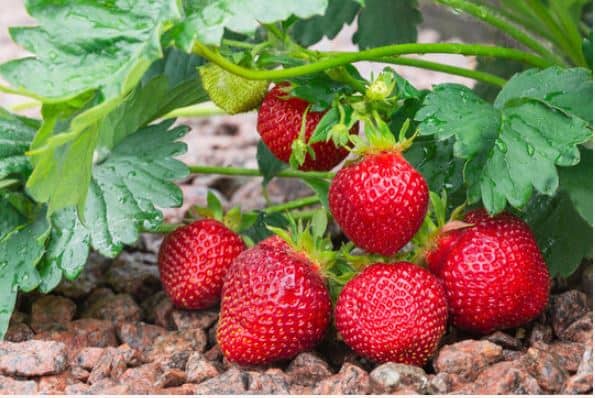
If the soil is too acidic or too alkaline, certain components can become toxic to plants and inhibit healthy growth. The most important element affecting the pH level of the soil is rainfall. Heavy rain will result in an elevated acid level, while an elevated alkalinity level may be caused by too much calcium carbonate.
Before you begin planting, it is important to prepare your soil and ensure that the pH level is right.
How Can I Check the pH Level of the Soil?
It is possible to buy testing kits from garden centers and nurseries, but you can avoid spending money on these by using simple ingredients that most people usually have in their homes, such as vinegar, baking soda, and distilled water.
You will need one cup of soil and another two empty containers. Put two spoons of soil in each. Add about a quarter of a cup of vinegar to the first container. If it fizzes, this means the soil is alkaline, with a pH of between 7 and 8.
If there is no reaction, turn the second container of soil into the mud with a little distilled water. Add a few spoons of baking soda. If it starts fizzing, your soil is acidic, with a pH level of between 5 and 6.
How Do I Adjust the pH Level of the Soil?
It is possible to alter the pH level of the soil to give your strawberries the best environment in which to thrive. It is not difficult to do this. If your soil is too acidic, you need to add some ground limestone. If it is too alkaline you should add some soil sulfur. These are readily available at nurseries and garden centers.
Now that you know when and where to plant your strawberries, you may be itching to get started. But first, let’s look at some of your options for the variety of strawberries available.
Selecting the Type of Strawberry to Plant in Zone 7
There are over 200 different varieties of strawberries to choose from. Agriculture experts are constantly experimenting and attempting to develop new and better breeds of strawberries. But what makes one variety better than another? The answer is not simple, because it depends on numerous factors.
Some varieties of strawberries are hardier than others and will thrive even in harsher conditions. Others will produce fruit that might be smaller, but tastier. Remember that with strawberries, like with many other things in life, bigger is not always better. Some will be light red in color, while others will be a much darker and more intense shade of red. And then there are one or two that are not red at all!
Which variety best suits your needs depends on many factors, the most important being climate and temperature.
There are also companion plants for strawberries that help the strawberries grow.
Some of the Most Popular Varieties of Strawberries for Zone 7
The strawberry known as the AC Wendy is best suited for areas in full sun and will do well in most types of soil. The fruit is usually fairly big and will ripen quite early.
The Albion also usually does very well in full sun and takes about 90 days from planting to harvesting.
The Alpine Alexandria strawberry will thrive in full sun or in semi-shaded areas. The fruit is usually very small compared to other varieties, but it is exceptionally sweet.
Have you ever seen or eaten a YELLOW strawberry? The Alpine Yellow Wonder is very unusual. It is a very light shade of yellow when fully ripe, and has a completely unique taste and scent. It has a hint of pineapple flavor. When you plant this strawberry in Zone 7, it needs full sun and will then yield a bountiful crop.
The sister to the Alpine Alexandria is the Alpine White Soul. As its name suggests, this variety produces an almost translucent, whitish fruit with a distinctly tropical flavor. The beauty of both these varieties is that birds will seldom be attracted to them, because of their dull color, so there is no need to protect them with netting. But I will tell you more about how to protect your strawberry plants from birds later on in this article.
Another delicious strawberry is the Berries Galore Pink Hybrid. With this variety, the name really encapsulates the type of fruit. It produces a medium-sized pale pink fruit. The plants are very prolific, and you should be able to pick tasty ripe fruit every three days or so throughout the season.
The Camarosa is a type of strawberry that does well in warmer climates. It tolerates heat very well. This is a variety that is often found in stores because it is so hardy and usually has a longer shelf life after harvesting.
The Chandler produces large, firm fruit. It is a good variety for Zone 7 because it is quite adaptable to a wide range of weather conditions.
The Delizz is a great variety to plant in Zone 7 and is also wonderful for growing in garden pots. It produces a very sweet medium-sized fruit.
The Earliglow, as its name suggests, will produce fruit early in the season. The berries are usually very firm, so they are highly suitable for freezing.
The Eversweet will yield the best fruit when planted in full sun. It will also thrive in containers and small areas. It is a good variety because it is quite strong at resisting diseases that often affect strawberry plants.
The Evie-2 is most suited to full sun, and it is much more tolerant of high temperatures than many other varieties. It will produce a large yield, often giving three crops in the spring, summer, and fall.
The Flavorfest is true to its name. It has a very strong flavor and produces very big, juicy fruit. It is a strong and hardy plant that is resistant to harsh conditions. It is seldom affected by diseases.
The Honeoye is an extremely popular variety of strawberry. It is well-liked because it is very prolific and gives an excellent yield of the firm, bright red fruit. However, with this variety, you need to watch out for black root rot, as it has a low resistance to this disease.
The Mara Des Bois does very well in containers and small beds. You are right in assuming that it was originally cultivated by a french plant breeder, named Jacques Marionnet. It is known to be one of the most flavorful and aromatic varieties of strawberries. If planted in full sun in Zone 7, you can expect excellent yields from this plant.
Ozark Beauty is one of North America’s most popular strawberries. The berries are usually very big, plump, and juicy. They require full sun for optimum growth and yield. It is a useful variety because it is quite easily adaptable. It can withstand very cold temperatures and won’t suffer any adverse effects, even if the temperature plummets.
The Purple Wonder is one of my personal favorites. They are a deep red-to-almost-purple color, not only on the outside but also on the fleshy part inside. They will produce their best fruit in full sun.
The Ruby Ann is a variety that will produce an excellent yield and does very well in garden pots and hanging baskets placed in full sun.
The Seascape also needs full sun and will start ripening about three months after planting. It does particularly well in very hot conditions. These strawberries are usually very big and a deep red in color.
The Toscana is loved not only for its delicious fruit but also for its deep pink flowers. While it prefers full sun, it will also do well in partial shade.
Lastly, the Whopper, as its name suggests, produces enormous berries, almost as big as a peach or a nectarine. Although I said earlier that bigger is not necessarily always better, these huge strawberries are almost always exceptionally sweet and juicy. They will do best in full sun and will keep on producing fruit throughout the season if you pick them regularly.
These are only a few of the most popular of the many varieties of strawberries.
Choosing Strawberries for Zone 7

So with all of this fascinating information about the different varieties, how do you choose which strawberries to plant in Zone 7? The answer is that it is actually a good idea to plant more than one variety. If you plant two or three varieties at a time, you will be more likely to get a wonderful crop of delicious fruit, with an ongoing supply that is ripe for picking for an extended period of time throughout the season.
All of the above varieties can be planted successfully from mid-December to early April, giving you a bumper crop of scrumptious, healthy fruit.
Now that you know when to plant strawberries in Zone 7, and where and how to plant them, you are ready to get planting. Soon you will be ready to harvest and enjoy a strawberry feast. Bon Appetit!

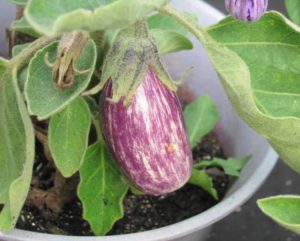

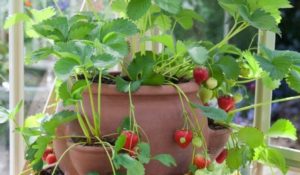
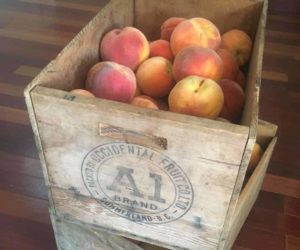
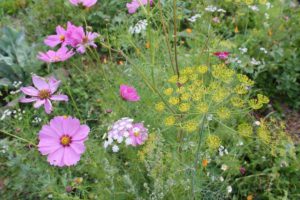
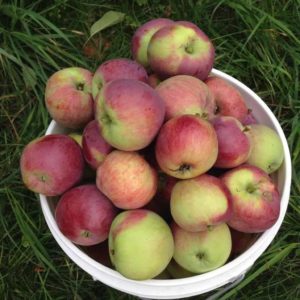
Very informative posting. Thank you very much. Now it is in the middles of April. Is it too late to plant strawberry now? I am in zone 7a.